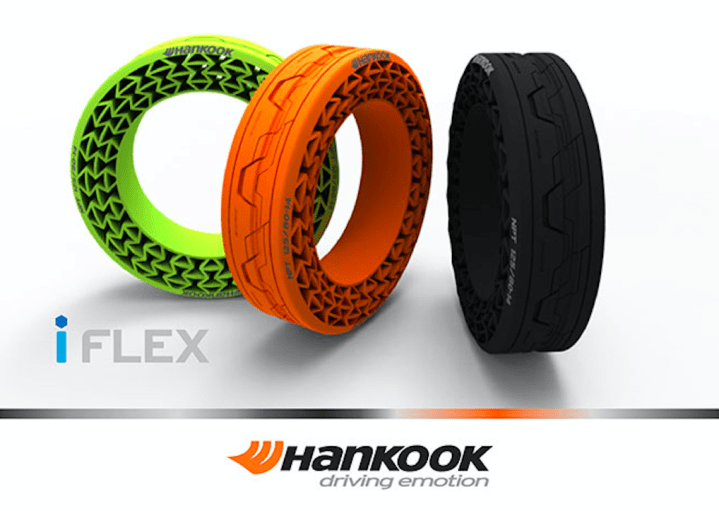
Hankook has dedicated research to air pressure-independent tires since 2011, and in the last four years has made significant strides in turning this futuristic tire into a product that is widely accessible by drivers across the world. Relying on geometric shapes insteadof air to provide the bouncy, springy qualities that are normally a product of air pressure, this latest version of a Hankook tire, the iFlex, can be mounted onto any traditional rim. Previous models of the tire combined both the rim and the tire into a single unit, which meant that vehicles would have to be entirely re-outfitted to make use of Hankook’s offerings.
But now, the iFlex is ostensibly compatible with any current vehicle, making it that much easier to bring to market. In recent tests, the innovative company tested the newfangled tire in five categories: durability, hardness, stability, slalom (zigzag), and speed. And as the company proudly announced in a press release, “In the speed test, the electric car equipped with iFlex tires reached 130 kph (around 80 mph). The impressive results in all five categories demonstrated that the NPTs could match conventional tires in terms of performance.”
An extremely environmentally conscious company as well, Hankook took extra precautions to ensure that it was minimizing its carbon footprint, using an eco-friendly material that “significantly enhances the energy efficiency” and also “allows the iFlex to be recycled with greater ease.” Furthermore, Hankook noted, its “new tire construction techniques … simplify the manufacturing process from eight stages to just four,” thereby ensuring that Hankook is doing as little as possible to pollute the atmosphere.
“The Hankook iFlex’s ability to deliver the perfect high-speed driving performance is the result of Hankook Tire’s longstanding commitment to independently developing progressive, innovative tire technology,” said Seung-Hwa Suh, vice chairman and CEO of Hankook Tire in a press release. “Aiming to strengthen our technological leadership in the global tire market, we will continue to develop cutting edge eco-friendly and future-oriented tires.”


